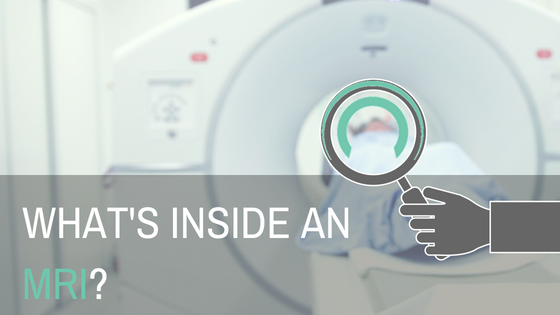A Look Inside The Eye of Orthopedic Medicine

An MRI scan is the best way to see inside the human body without cutting it open. Doctors use MRI scans (studies) to help diagnose many different illnesses, including:
- multiple sclerosis,
- brain tumors,
- torn ligaments,
- TMJ,
- tendonitis,
- cancer
- strokes.
MRI scanners vary in size and shape, but the basic design is the same, the patient is pushed into a tube and images of the details inside appear. Some newer models have a greater degree of openness around the sides, but what's inside?
What's Inside An MRI?
The biggest and most important component of an MRI system is the magnets that run from front to back of the tube. This horizontal tube is known as the bore -- the same one the patient enters and runs through. Inside the bore is an incredibly strong magnetic field.
How Does The Eye Of An MRI See Inside of Me?
The human body is largely made of water molecules, which are comprised of hydrogen and oxygen atoms. At the center of each atom lies an even smaller particle called a proton, which serves as a magnet and is sensitive to any magnetic field. Normally, the water molecules in our bodies are randomly arranged, but upon entering an MRI scanner, the first magnet causes the body's water molecules to align in one direction, either north or south.
The second magnetic field is then turned on and off in a series of quick pulses, causing each hydrogen atom to alter its alignment and then quickly switch back to its original relaxed state when switched off. The magnetic field is created by passing electricity through gradient coils, which also cause the coils to vibrate, resulting in a knocking sound inside the scanner. Although the patient cannot feel these changes, the scanner can detect them and, in conjunction with a computer, can create a detailed cross-sectional image for the radiologist to interpret.


